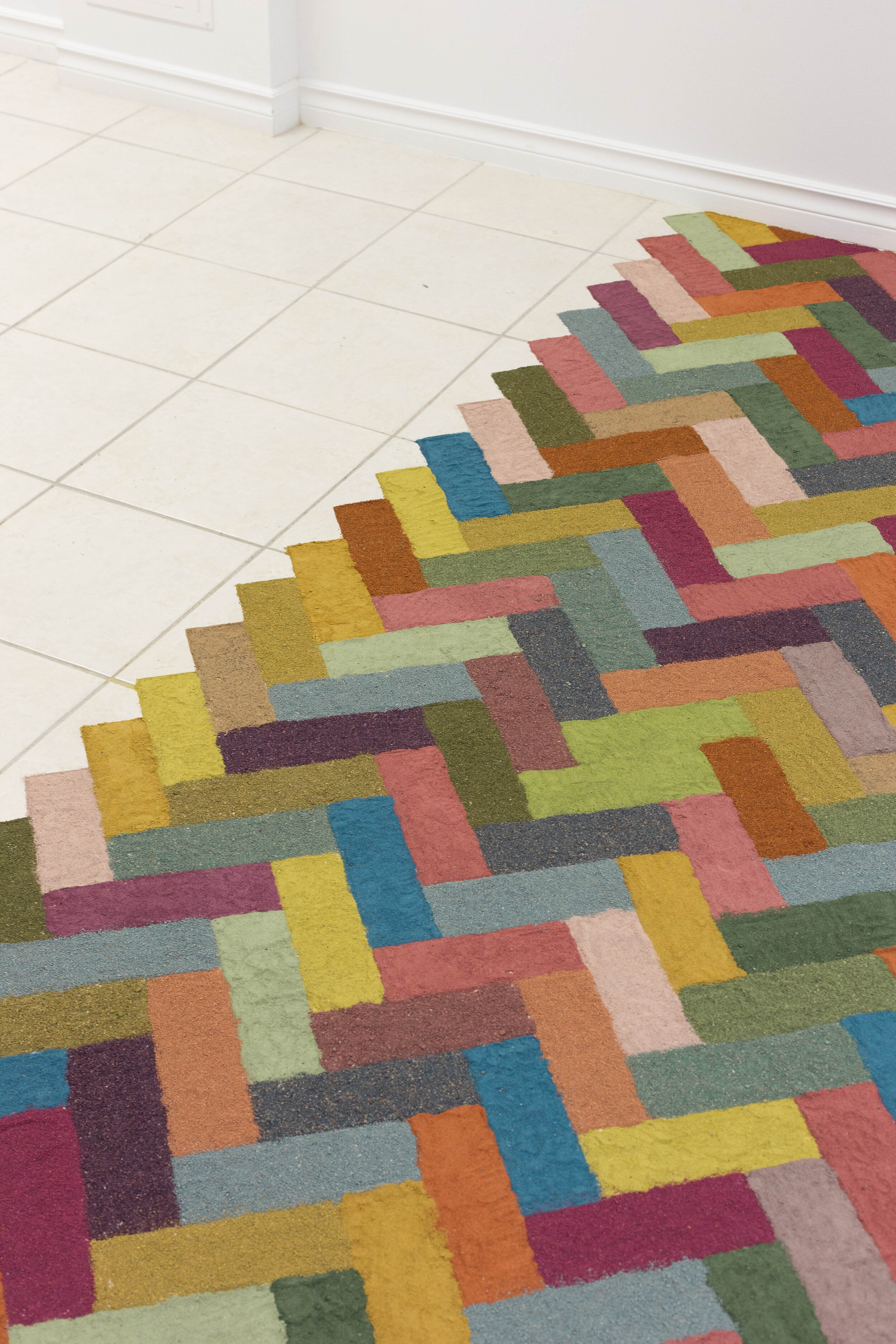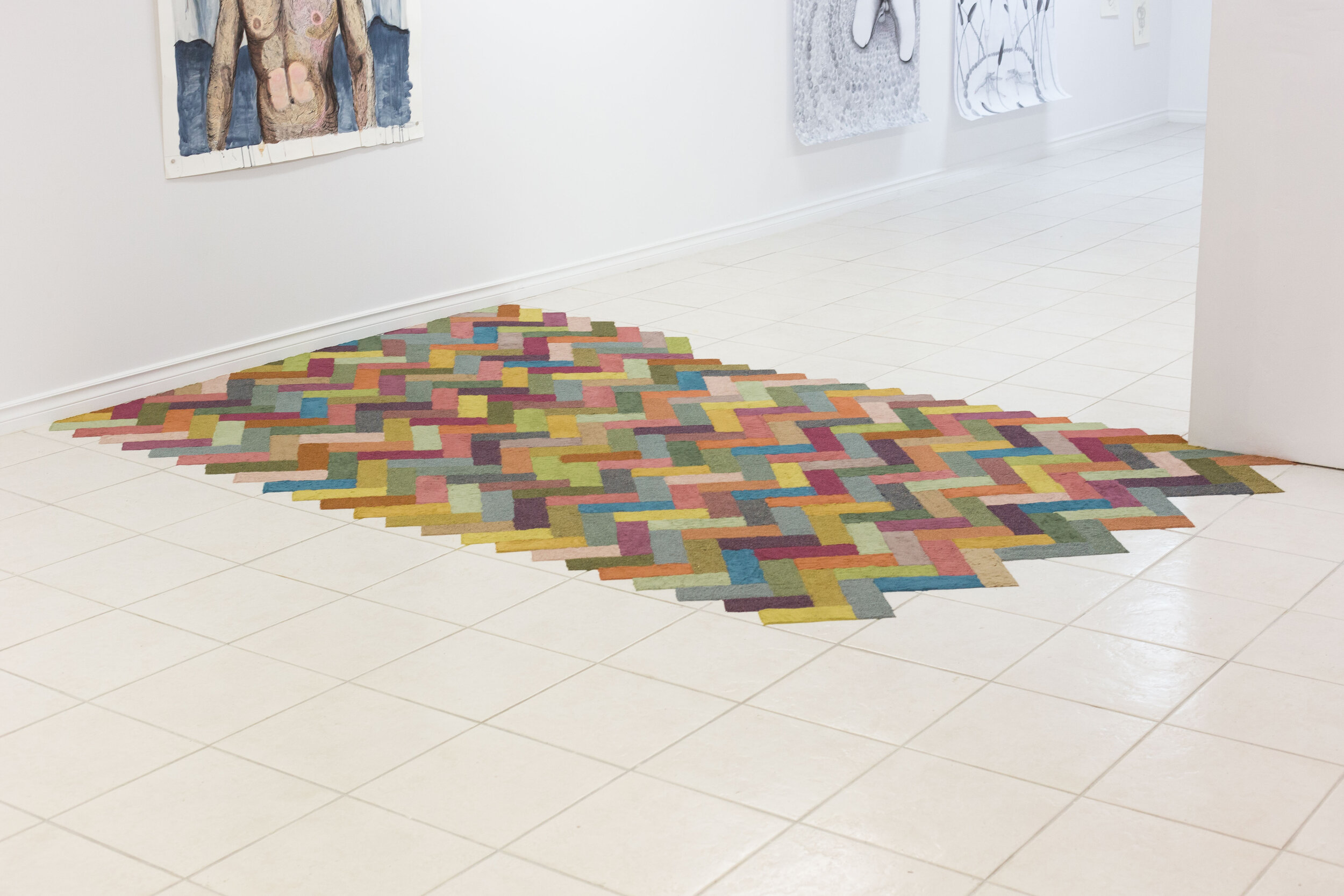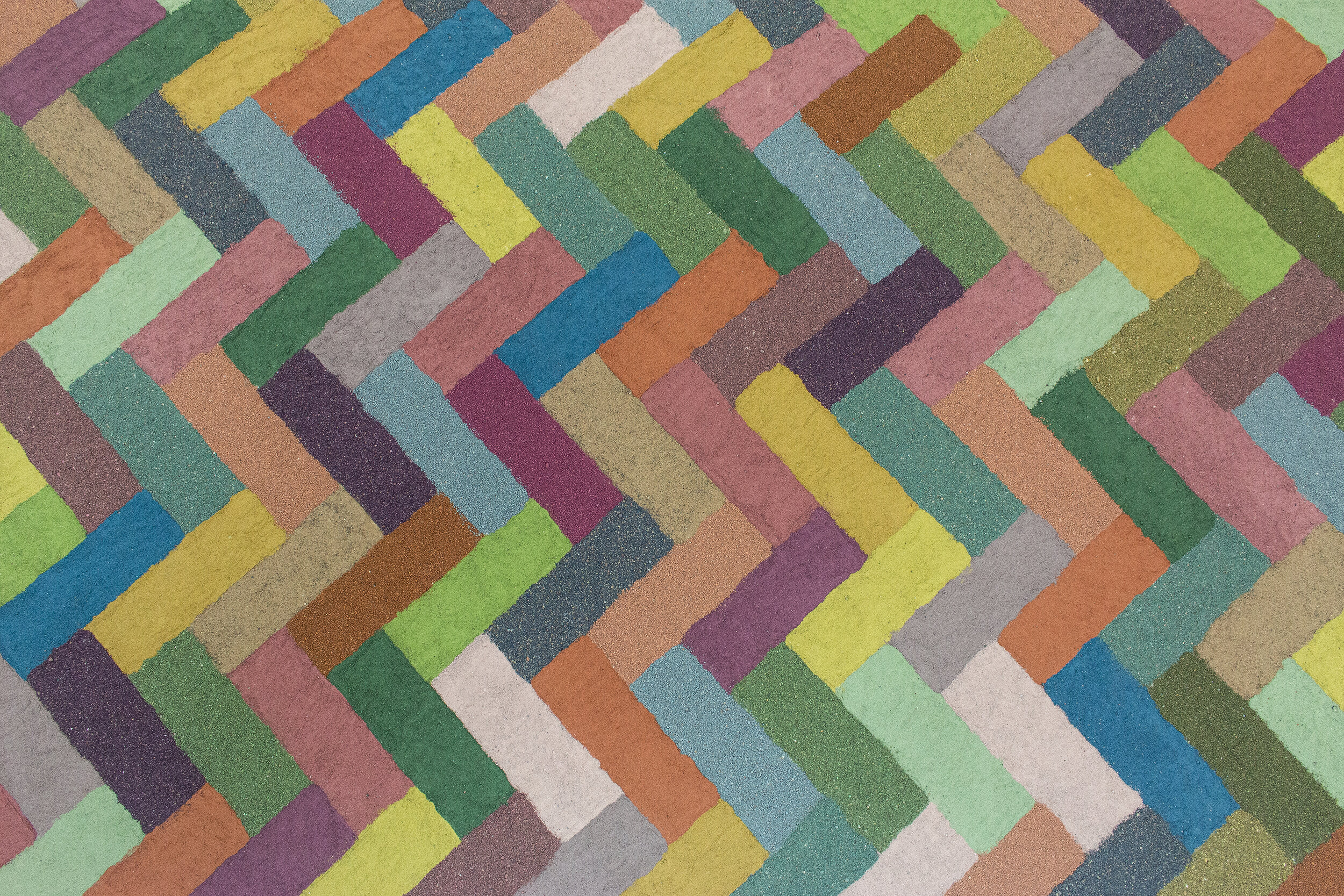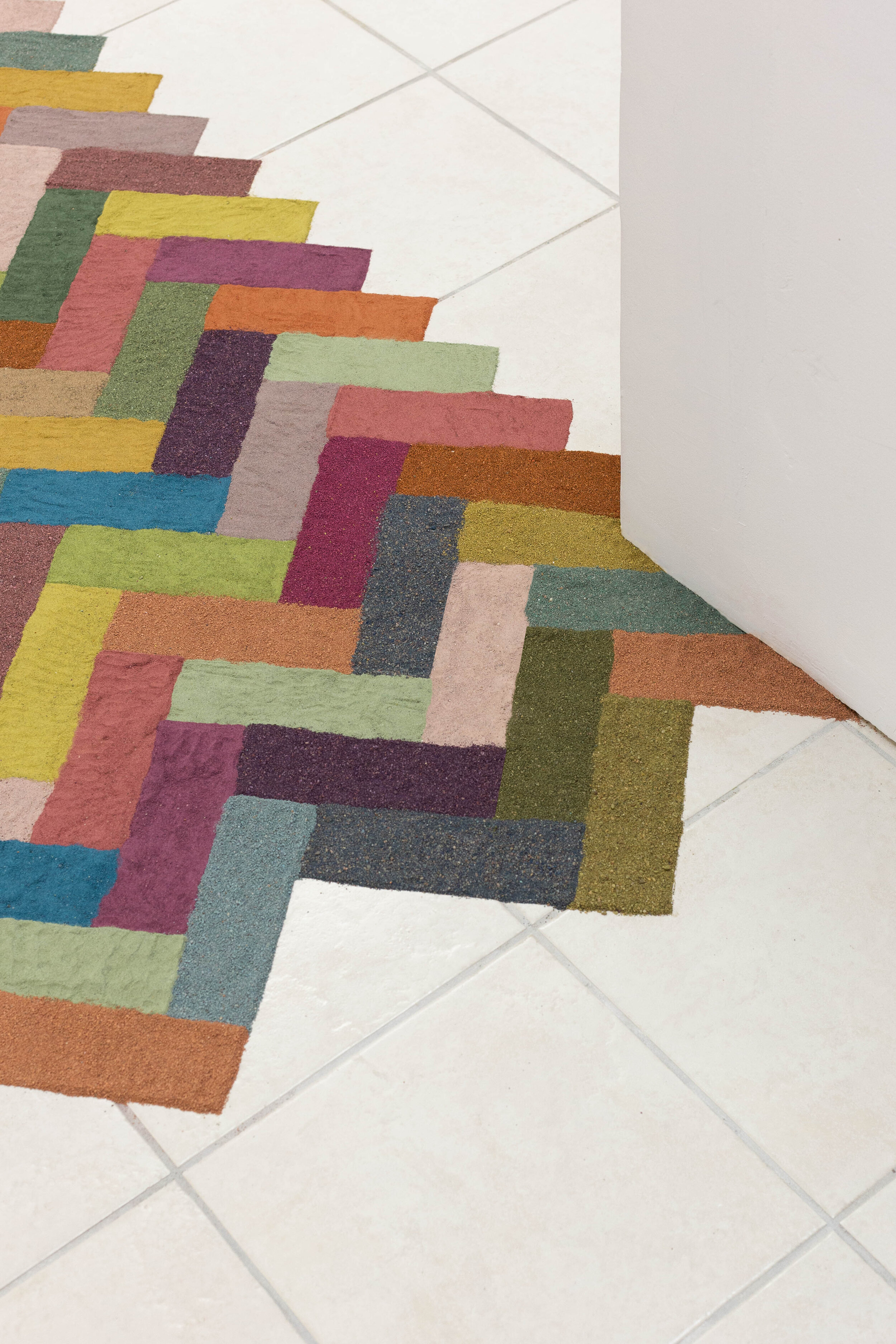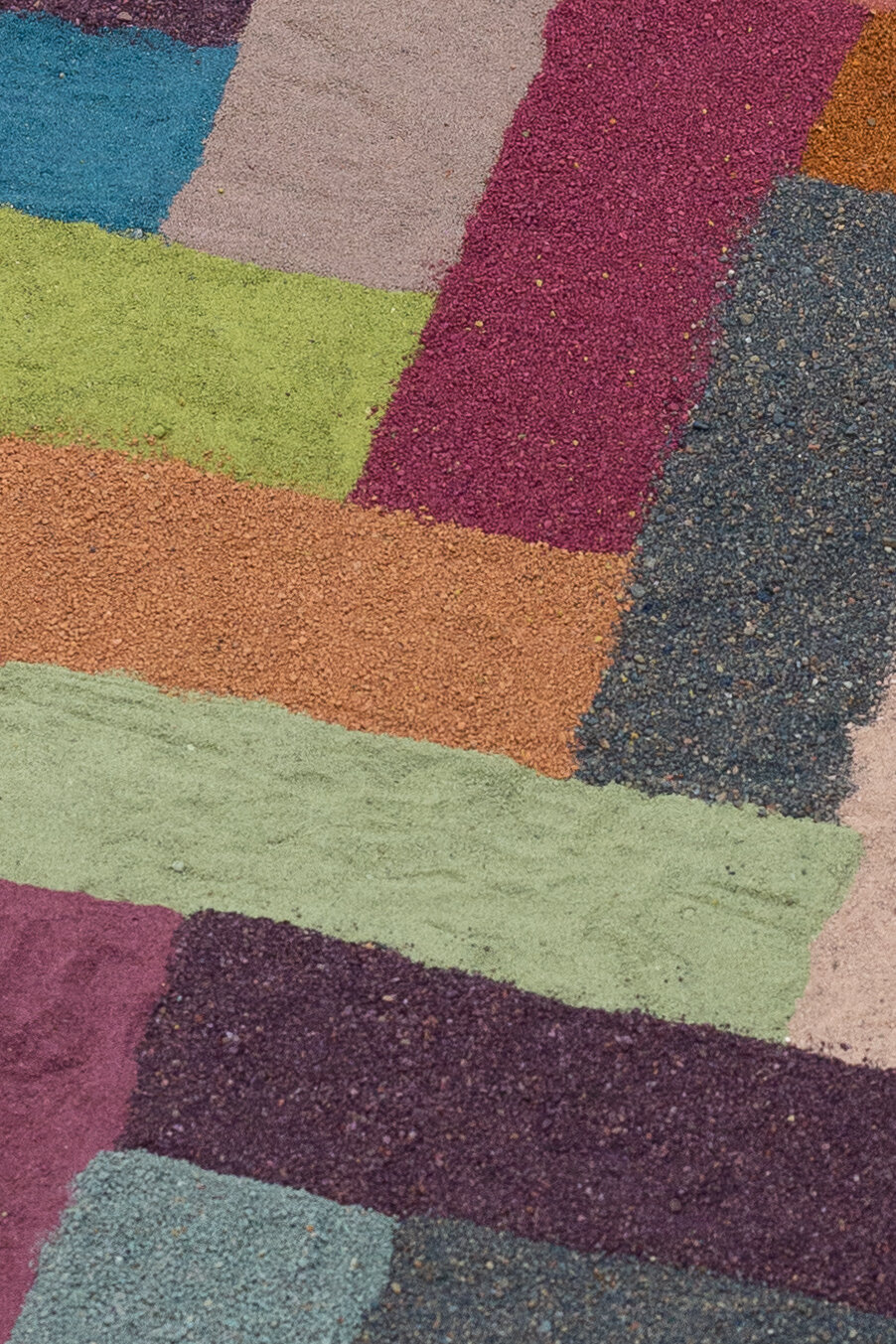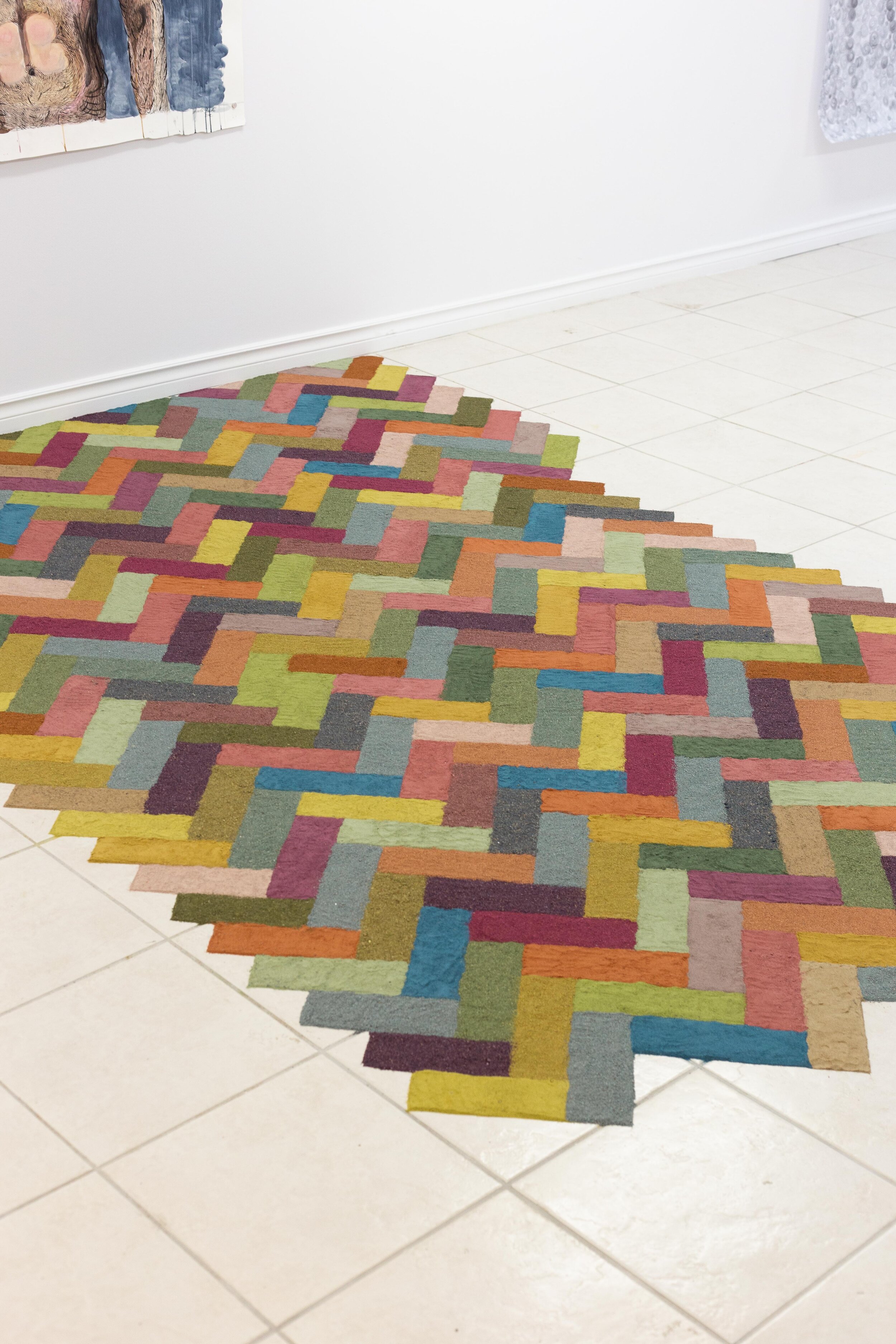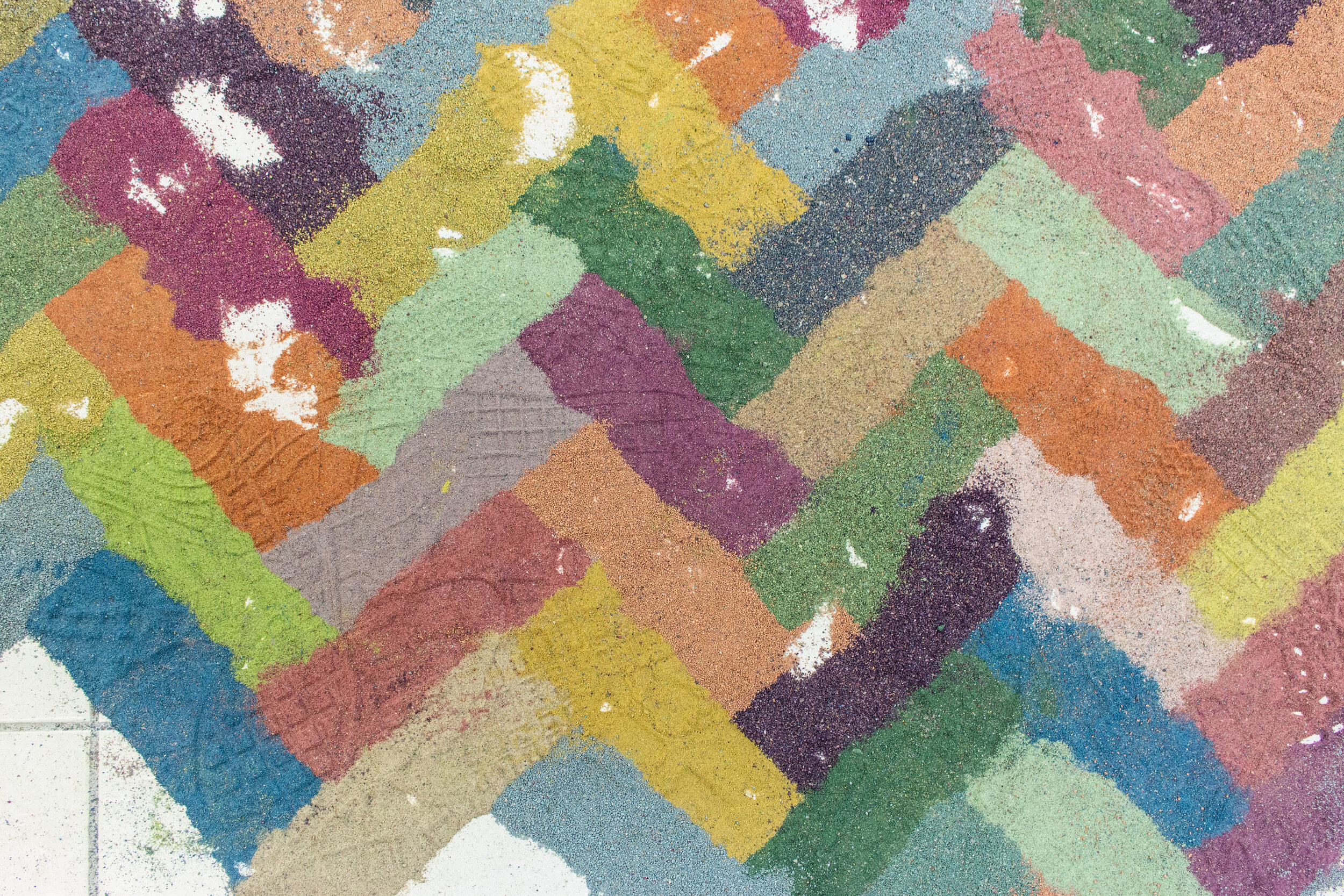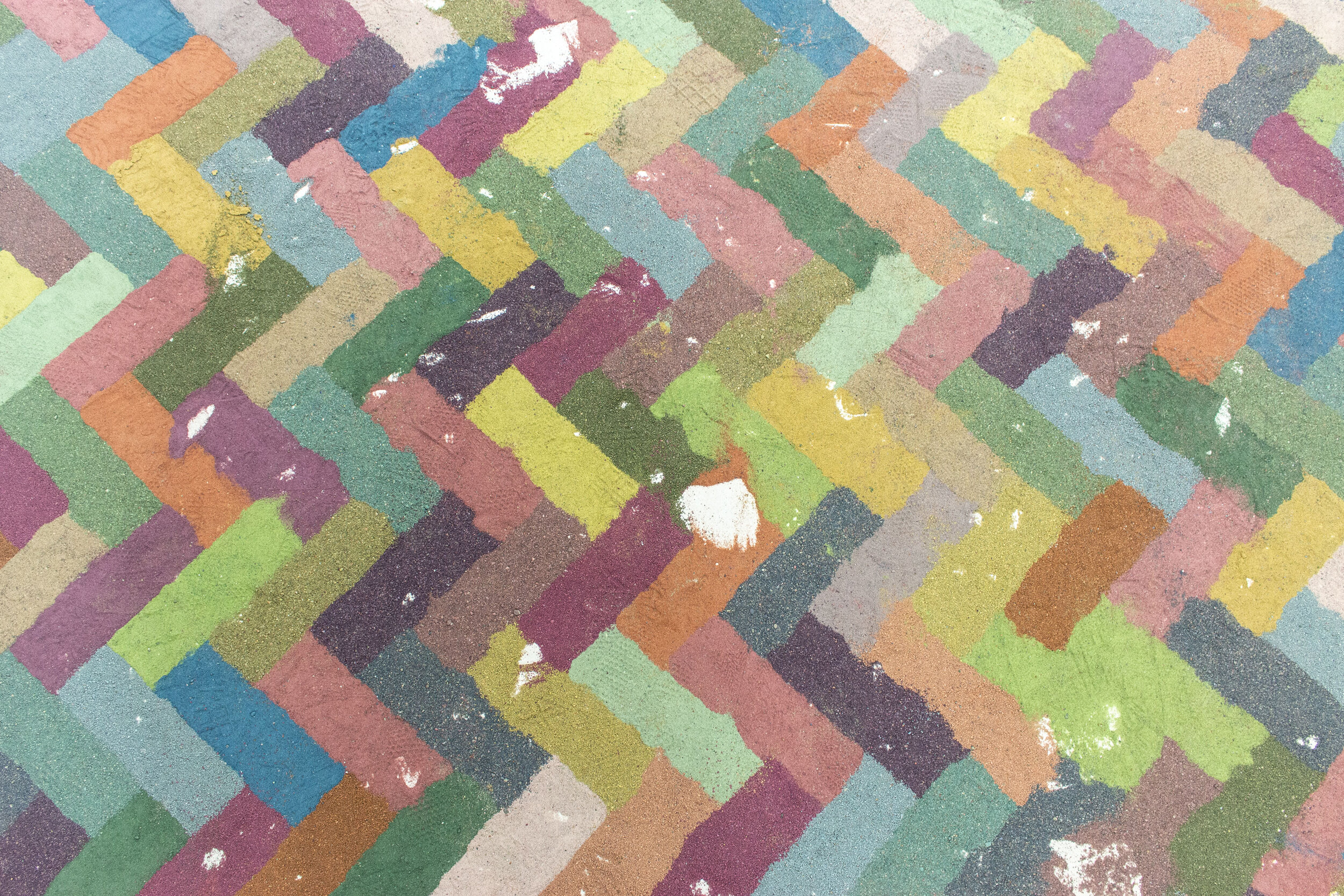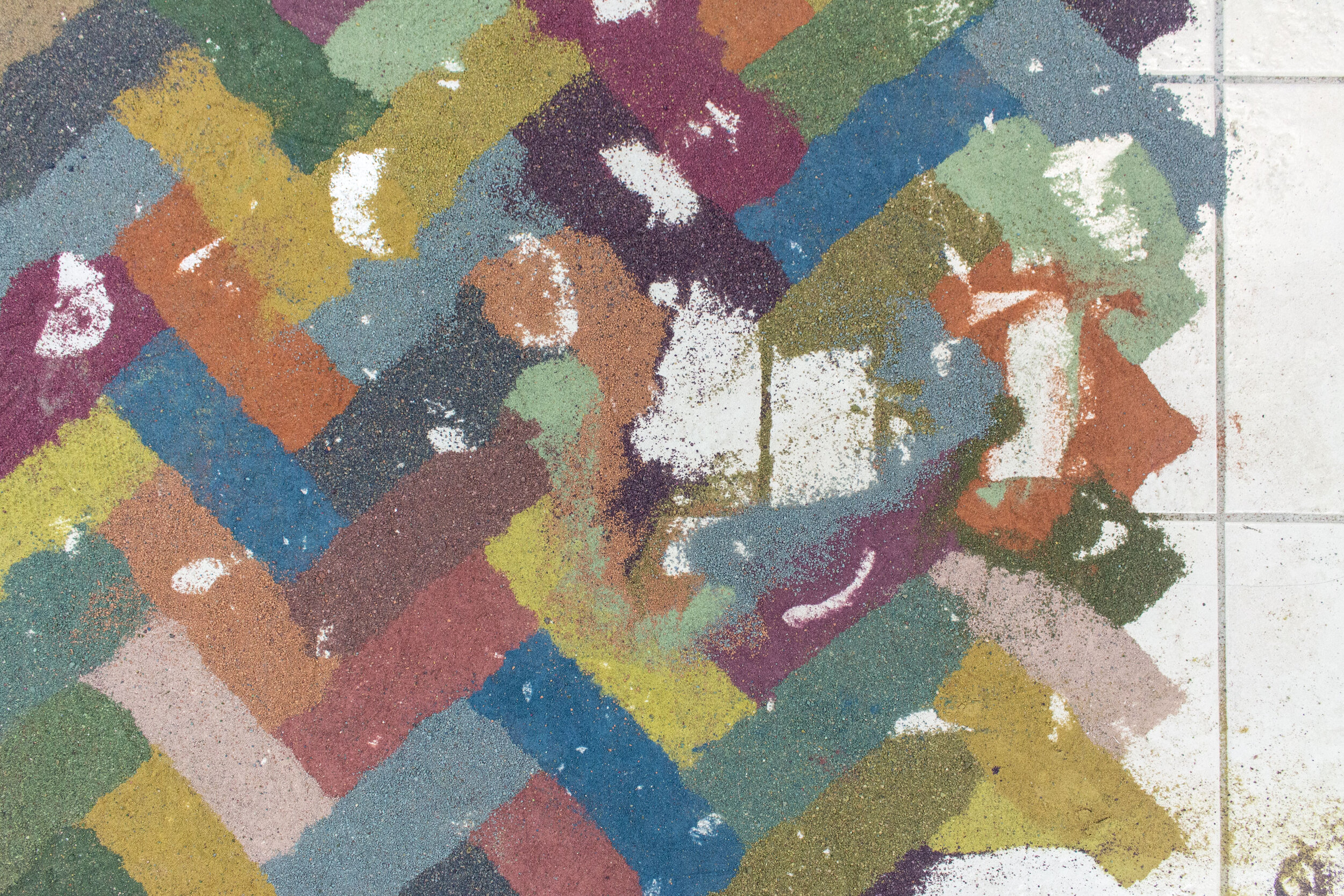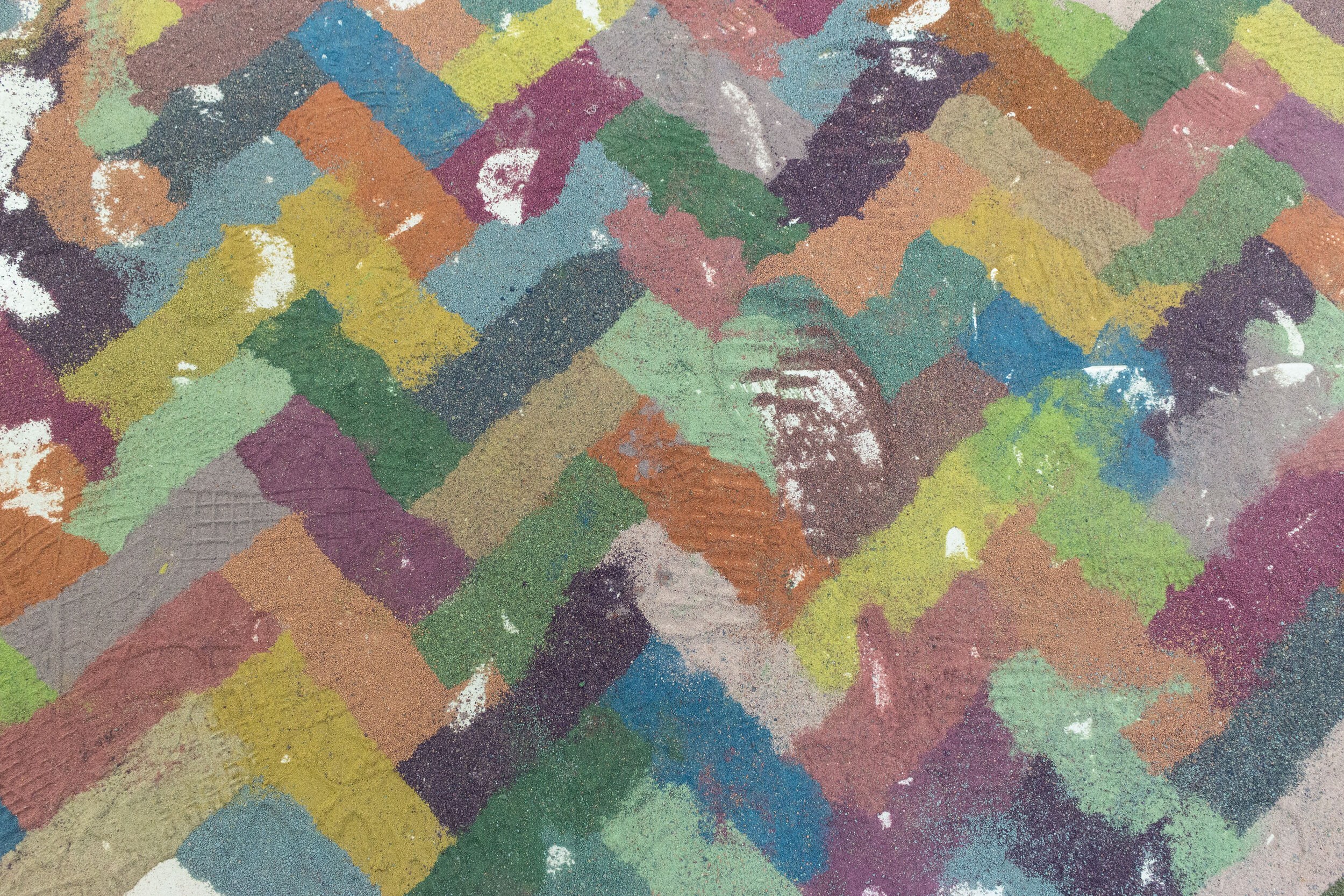Sand Silhouette (In the group show Chop, Chop Lollipop)
May 30-June 25, 2021
Dyed sand, approximately 111” x 60”
Curated by Amanda Boulos, Nadine Maher, and Claudia Rick; Featuring Maya Ben David, Amanda Boulos, Jessica Eisner, Shannon Garden-Smith, Jessica Jang, Renée Lear, Amy Lockhart, Nadine Maher, Michael McGlennon, Kaitlynn McQueston, Jasmine Reimer, Claudia Rick, Henry Sawtell, Scott Sawtell, Shannon Scanlan, Carolyn Slogar
the plumb, Toronto ON
Photos: Alison Postma; Shannon Garden-Smith
Recently, an ancient graveyard was discovered in Suffolk, England by a real estate developer. Excavation of the site revealed a rare and significant burial ground in which human remains were visible only as ‘sand-silhouettes’, “a delicate form of preservation.” In the words of the lead archeologist supervising the site, “Due to the highly acidic soil the skeletons had mostly vanished and were luckily preserved as fragile shapes and shadows in the sand.”
With the human remains excavated, removed from the site, and now undergoing further analysis, the real estate development has resumed.
Over the last years, I’ve grown a photo archive that documents instances of shoe prints caught in sidewalk concrete or road paint. These prints mimic trace fossils—fossils that preserve the movement of bodies rather than bodies themselves. Like these fossils, the ‘sand silhouettes’ at Suffolk also image historical bodies in absentia. The shoe treads and the Suffolk sand silhouettes also share a relationship with building development projects—the tread prints showing up in poured concrete sidewalks that demarcate pedestrian pathways in our cities, and the sand silhouettes discovered, exhumed, and displaced due to the machinations of real estate development.
Astoundingly, sand—a material we associate with notions of infinitude and time—is beginning to “run out.” Or, to be more precise, the building industry is using so much sand that we have begun to exhaust the world’s reserves of it. At the same time, more and more of earth’s surface is undergoing a process of desertification; it’s becoming sand. This kind of sand doesn’t work for the purposes of the building industry—it’s particles are too round. Only sand borne of thousands of years of water pelting rock is fit for building.
Included in the group show Chop Chop Lollipop at the plumb curated by Amanda Boulos, Nadine Maher, and Claudia Rick, Sand Silhouette is a floor-installation consisting of a thin layer of multi-coloured sand arranged in a herringbone pattern. Herringbone is a repeating pattern which has been used in textiles and in floor coverings for centuries, and it is so-named for the resemblance it shares with the skeleton of the herring fish. Visitors to the exhibition move through the sand floor pattern to view the show, thus mixing the colours of the individual bricks and leaving their own, transient tracks in the impermanent installation.
